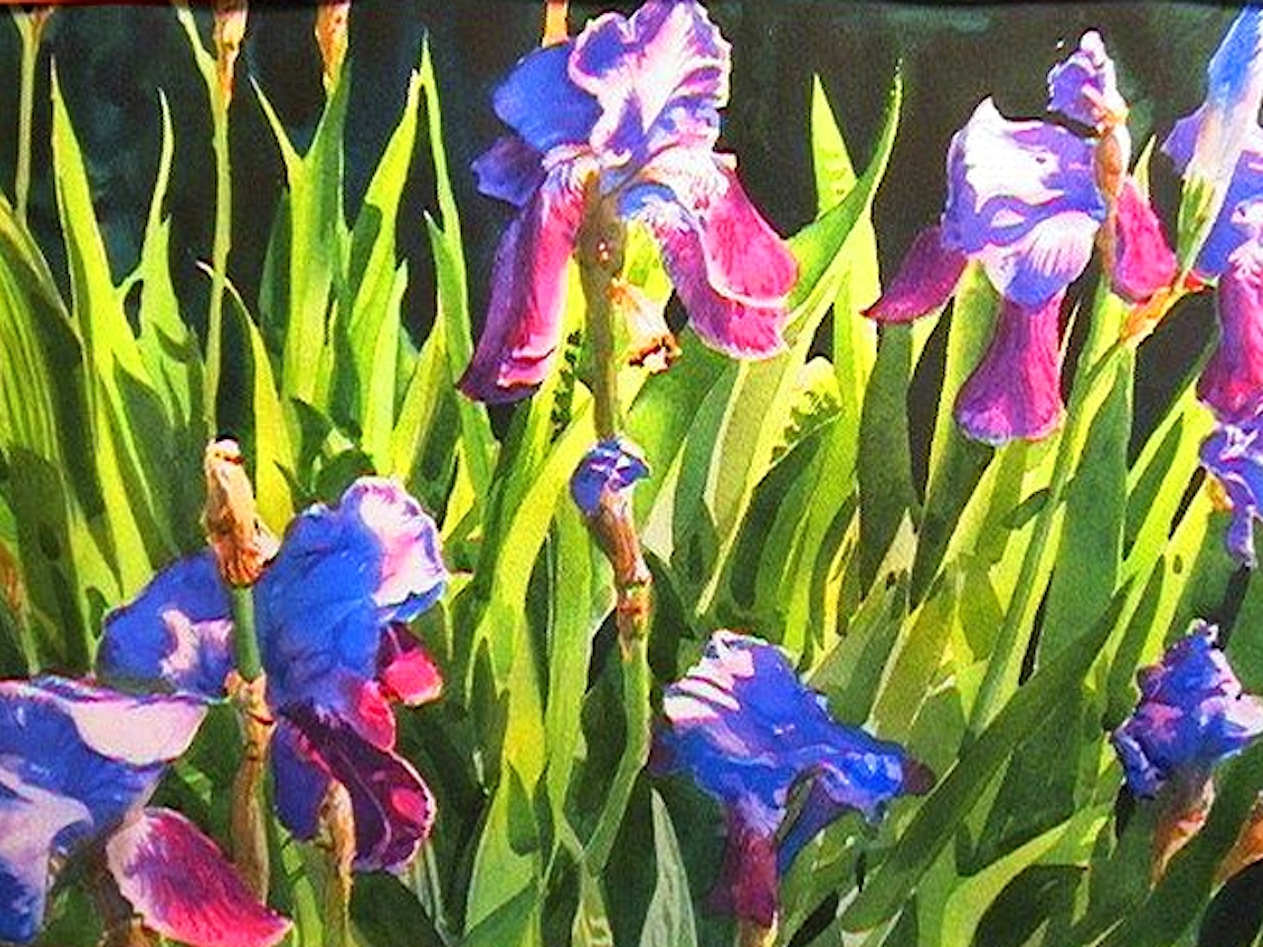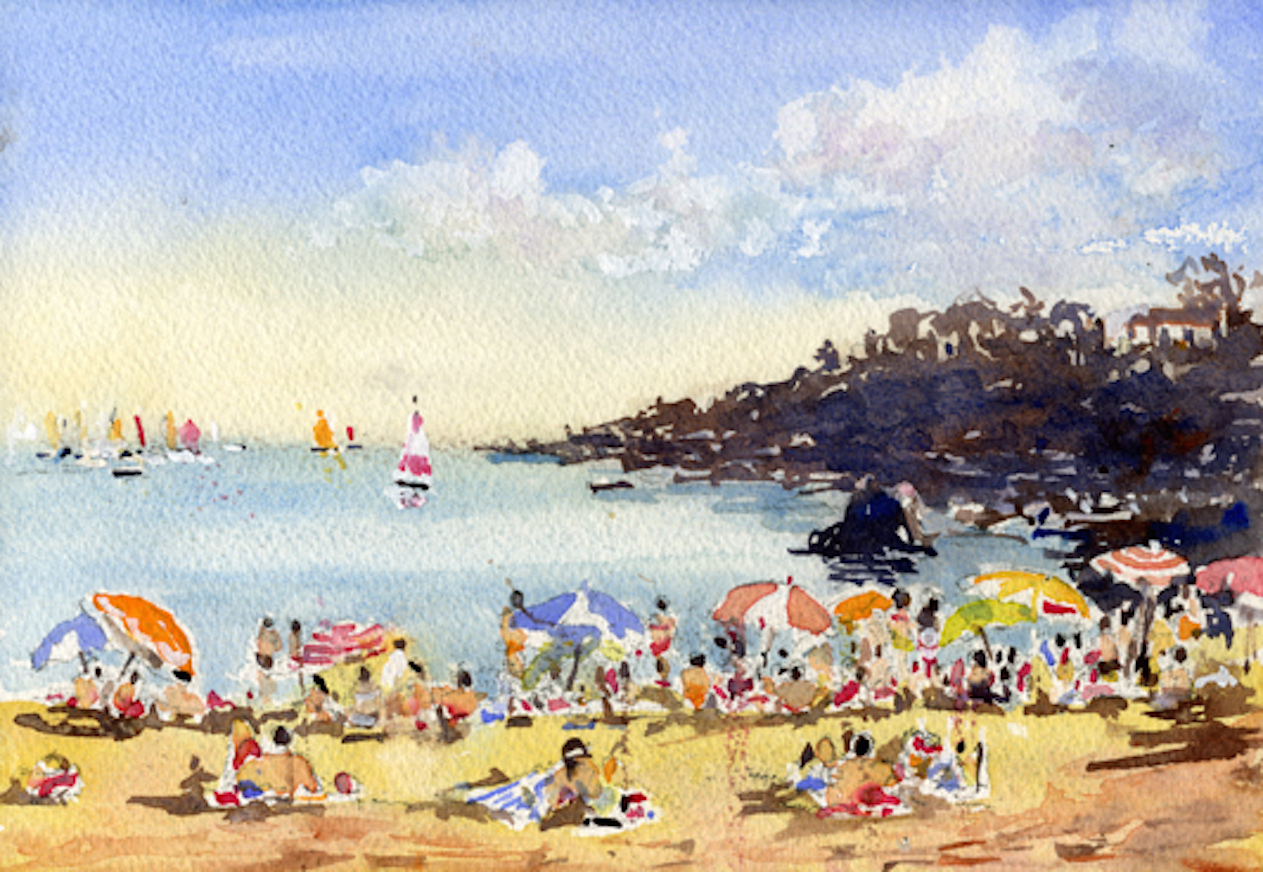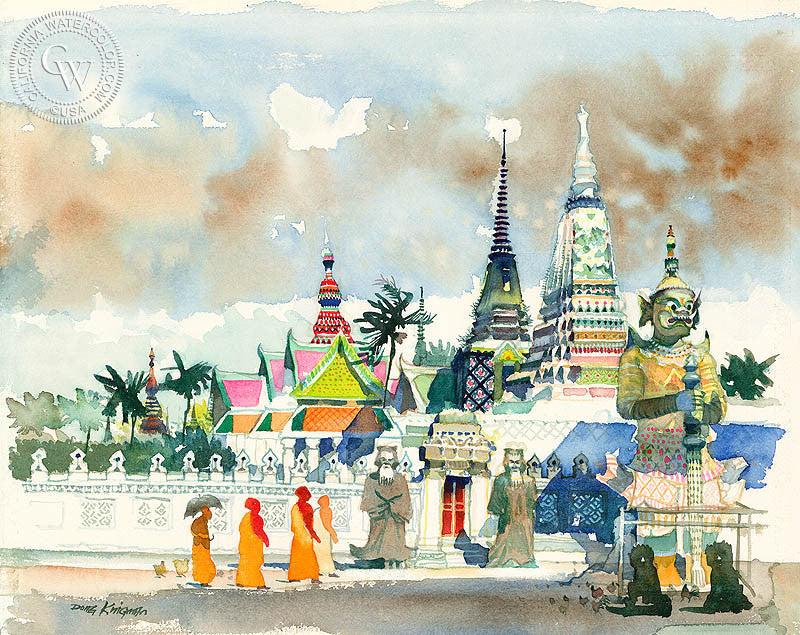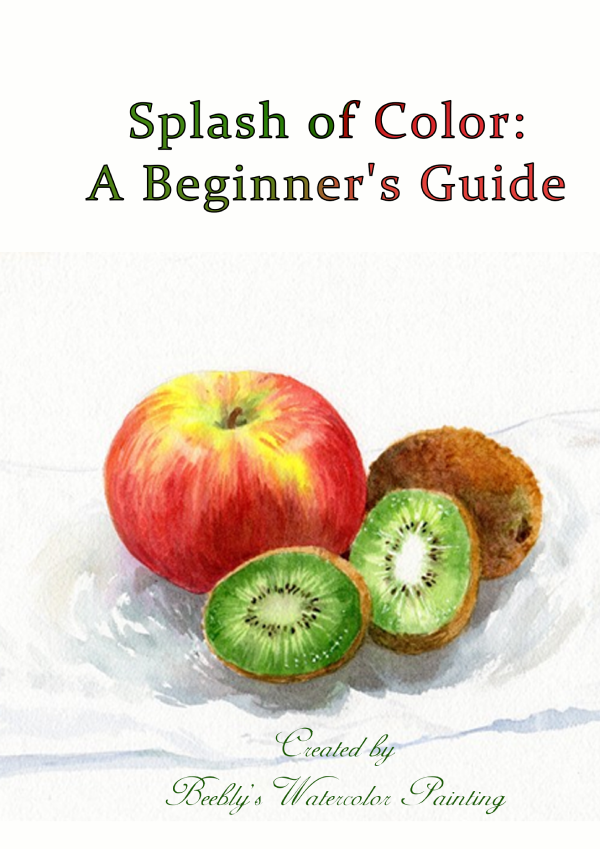Step Six: Out of the shadows After thoroughly removing the frisket and redrawing lost areas, I painted the shadow areas on the lighthouse in the same blue as the sky. Next I used blues, grays, and greens to paint the causeway leading to the lighthouse. I fished these colors from the various mixtures already on my palette. While I had a clean mixture of Hooker's green in my #5 brush I invented some landscaping at the base of the building. I studied the forms at the base of the building and redrew them, a light colored rail and pier was...
Categories: Step-By-Step Painting Ideas , Watercolor Lessons , Intermediate TechniquesStep Seven: Altering reality My original photo had a background of a sunlit brick wall. I decided the bricks would make the painting too busy and opted to use a dark mixture of Pthalocyanine Blue and Burnt Umber to indicate a deep shadow area behind the entire group of flowers and foliage. I varied the mixture as I painted the background. These two colors can give you deep dark blues, rich greens and warm dark browns as you mix them in different quantities. Step Eight: Chasing the light I started to work intensely on the patterns of light and dark...
Categories: Step-By-Step Painting Ideas , Watercolor Lessons , Intermediate Techniques
Materials used: Brushes 1 1/2" (381mm) Flat Winsor & Newton Series 965 " Grumbacher Aquarelle Flat Red Sable #12 Winsor & Newton Series 7 Red Sable #10 Winsor & Newton Series 820 Red Sable #6 Grumbacher Watercolor Classic Paints Sap Green Hooker's Green Dark Pthalocyanine Blue Cobalt Blue Dioxazine Purple Alizarin Crimson Permanent Rose Raw Sienna Burnt Umber Paper Spiral Pad (11" x 14") Canson #140 cold pressed< Miscellaneous #2 Pencil Kneaded Eraser Palette - Your choice. Mine is an old Robert E. Wood model. Water container (2) and water Hair dryer (optional) Step One: Preparing reference art After developing...
Categories: Step-By-Step Painting Ideas , Watercolor Lessons , Intermediate Techniques
In around 4 hours, you will create a beautiful watercolor showing an idyllic beach in the Mediterranean, where families are relaxing together in the summer sunshine. In between washes you may use a hair dryer to hasten the drying process for the next stage. Using a hair dryer can be useful. Without one, you'll literally be watching the paint dry for at least the next few minutes. I use a palette with deep wells for mixing my watercolor paints with lots of water. I also use a big water container (like a child’s seaside bucket). I prefer to work with my...
Categories: Step-By-Step Painting Ideas , Watercolor Lessons , Beginner Techniques
Dong Kingman - A Chinese American watercolor artist "Dong Kingman is recognized as one of the premier watercolor masters in America and a pioneer of the California school of painting. Born in Oakland, California as Dong Moy Shu, Mr. Kingman returned to Hong Kong with his family at age five. There, at the Lingnan School, he studied painting with a Paris-trained teacher. When he returned to Oakland in 1929, he already excelled at calligraphy and watercolor painting; however, he enrolled at a local art school to further his studies. A solo exhibition in San Francisco in 1936 elevated him to...
Categories: Artists in Action


